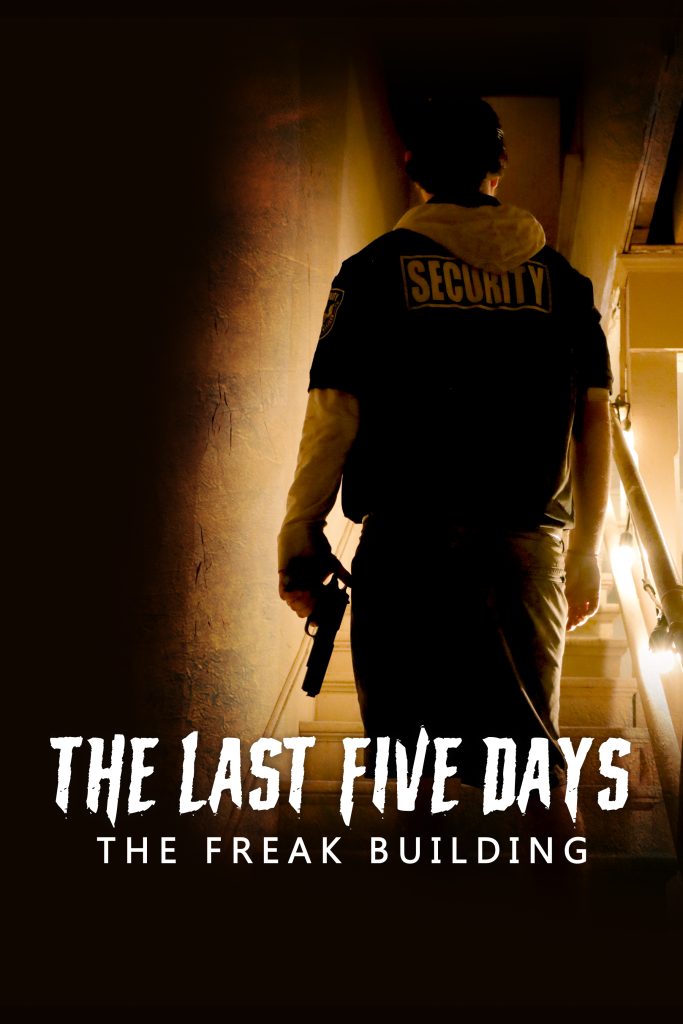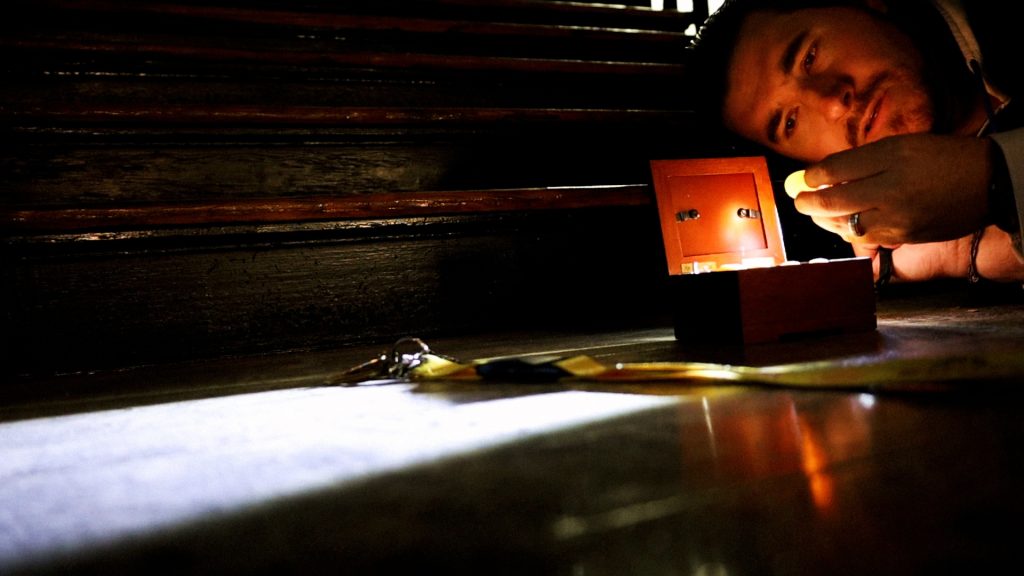A security guard decides to record his last ever shift at a large and disused building in the hopes of catching some paranormal activity in Clay Moffatt’s The Last Five Days 3: The Freak Building.

Renowned for his diverse filmography encompassing works like “Silver Woods,” “Pocketman and Cargo Boy,” and “Wrath of the Viper Sniper,” Clay Moffatt continues to intrigue audiences with his creative ventures. Screen Critix has frequently featured Moffatt’s creations, offering an intriguing journey through varied genres. In this latest endeavor, we delve into Moffatt’s horror trilogy, “The Last Five Days,” particularly its third installment, a prequel untangling the origins of a sinister curse, revolving around the enigmatic figure of Jacob Sanders, portrayed by Moffatt himself.
Despite Screen Critix having previously explored Moffatt’s cinematic repertoire, the absence of reviews for the first two films in the horror trilogy, “The Last Five Days” and “The Last Five Days: Ten Years Later,” left a peculiar gap in the narrative. Approaching the third installment without prior knowledge of the series presented a unique experience, one that required immersion into the mysterious deaths of brothers Greg and Chuck Sanders, portrayed by Moffatt. The third film serves as a prequel, unraveling the ominous beginnings of the curse, intricately woven around the patriarch of the Sanders family, Jacob.

Set against the backdrop of Christmas Eve in 1996, a pivotal year in cinema featuring classics like “Independence Day,” “Fargo,” “Scream,” “Mars Attacks,” and “The Craft,” Jacob finds himself employed as a security guard tasked with overseeing the closure of an old building previously utilized by a catalogue company. As the company shuts down, Jacob, portrayed by Moffatt, faces an uncertain employment future after the holiday season. Yet, the narrative takes an eerie turn, revealing Jacob’s decision to document potential supernatural occurrences during his final shift in the building, one that has witnessed its fair share of spectral happenings.
Throughout the film, Jacob predominantly narrates his experiences to the camera, providing insights into the building’s history and the town’s mysterious past. The narrative unfolds with a series of eerie moments, ranging from slamming doors and toppling items to shadowy movements and a particularly unsettling sequence featuring a deranged face peering through a window. However, certain cinematographic choices, such as shots of Jacob walking down a corridor with a flashlight, raise logical questions about the character’s solitary presence with the camera. A more seamless approach to camera work could enhance the overall viewer experience.
Nevertheless, Moffatt and his team do well to craft an atmosphere of uneasiness, heightened by intriguing elements like a forbidden locked door. Jacob, in defiance of the rules on his last shift, opens the door to unveil a vast, empty pool surrounded by police crime tape, accompanied by the eerie sight of a doll perched on a rocking horse—an inventive touch that resonates well with the horror genre.

As with all of the movies by Clay Moffitt so far, they have been created with little money to hand, but with a driven focus, both he and his team have managed to not only create a full movie, but they have also made something that was interesting and have the ability to send a few shivers up our collective spines.
Leave a Reply